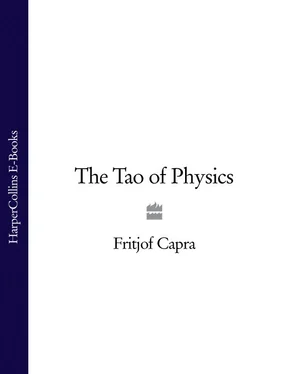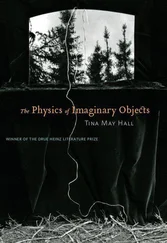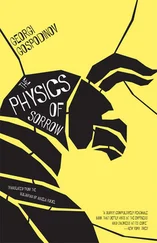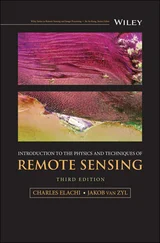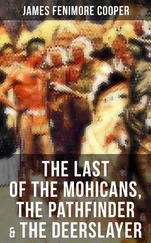When the mind is disturbed, the multiplicity of things is produced, but when the mind is quieted, the multiplicity of things disappears. 4
Although the various schools of Eastern mysticism differ in many details, they all emphasize the basic unity of the universe which is the central feature of their teachings. The highest aim for their followers—whether they are Hindus, Buddhists or Taoists—is to become aware of the unity and mutual interrelation of all things, to transcend the notion of an isolated individual self and to identify themselves with the ultimate reality. The emergence of this awareness—known as ‘enlightenment’—is not only an intellectual act but is an experience which involves the whole person and is religious in its ultimate nature. For this reason, most Eastern philosophies are essentially religious philosophies.
In the Eastern view, then, the division of nature into separate objects is not fundamental and any such objects have a fluid and ever-changing character. The Eastern world view is therefore intrinsically dynamic and contains time and change as essential features. The cosmos is seen as one inseparable reality—for ever in motion, alive, organic; spiritual and material at the same time.
Since motion and change are essential properties of things, the forces causing the motion are not outside the objects, as in the classical Creek view, but are an intrinsic property of matter. Correspondingly, the Eastern image of the Divine is not that of a ruler who directs the world from above, but of a principle that controls everything from within:
He who, dwelling in all things,
Yet is other than all things,
Whom all things do not know,
Whose body all things are,
Who controls all things from within—
He is your Soul, the Inner Controller,
The Immortal. 5
The following chapters will show that the basic elements of the Eastern world view are also those of the world view emerging from modern physics. They are intended to suggest that Eastern thought and, more generally, mystical thought provide a consistent and relevant philosophical background to the theories of contemporary science; a conception of the world in which scientific discoveries can be in perfect harmony with spiritual aims and religious beliefs. The two basic themes of this conception are the unity and interrelation of all phenomena and the intrinsically dynamic nature of the universe. The further we penetrate into the submicroscopic world, the more we shall realize how the modern physicist, like the Eastern mystic, has come to see the world as a system of inseparable, interacting and ever-moving components with the observer being an integral part of this system.
The organic, ‘ecological’ world view of the Eastern philosophies is no doubt one of the main reasons for the immense popularity they have recently gained in the West, especially among young people. In our Western culture, which is still dominated by the mechanistic, fragmented view of the world, an increasing number of people have seen this as the underlying reason for the widespread dissatisfaction in our society, and many have turned to Eastern ways of liberation. It is interesting, and perhaps not too surprising, that those who are attracted by Eastern mysticism, who consult the I Ching and practise Yoga or other forms of meditation, in general have a marked anti-scientific attitude. They tend to see science, and physics in particular, as an unimaginative, narrow-minded discipline which is responsible for all the evils of modern technology.
This book aims at improving the image of science by showing that there is an essential harmony between the spirit of Eastern wisdom and Western science. It attempts to suggest that modern physics goes far beyond technology, that the way—or Tao —of physics can be a path with a heart, a way to spiritual knowledge and self-realization.
Chapter 2 Knowing and Seeing
From the unreal lead me to the real!
From darkness lead me to light!
From death lead me to immortality!
Brihad-aranyaka Upanishad
Before studying the parallels between modern physics and Eastern mysticism, we have to deal with the question of how we can make any comparison at all between an exact science, expressed in the highly sophisticated language of modern mathematics, and spiritual disciplines which are mainly based on meditation and insist on the fact that their insights cannot be communicated verbally.
What we want to compare are the statements made by scientists and Eastern mystics about their knowledge of the world. To establish the proper framework for this comparison, we must firstly ask ourselves what kind of ‘knowledge’ we are talking about; does the Buddhist monk from Angkor Wat or Kyoto mean the same thing by ‘knowledge’ as the physicist from Oxford or Berkeley? Secondly, what kind of statements are we going to compare? What are we going to select from the experimental data, equations and theories on the one side, and from the religious scriptures, ancient myths, or philosophical treatises on the other? This chapter is intended to clarify these two points: the nature of the knowledge involved and the language in which this knowledge is expressed.
Throughout history, it has been recognized that the human mind is capable of two kinds of knowledge, or two modes of consciousness, which have often been termed the rational and the intuitive, and have traditionally been associated with science and religion, respectively. In the West, the intuitive, religious type of knowledge is often devalued in favour of rational, scientific knowledge, whereas the traditional Eastern attitude is in general just the opposite. The following statements about knowledge by two great minds of the West and the East typify the two positions. Socrates in Greece made the famous statement ‘I know that I know nothing’, and Lao Tzu in China said, ‘Not knowing that one knows is best’ In the East, the values attributed to the two kinds of knowledge are often already apparent from the names given to them. The Upanishads , for example, speak about a higher and a lower knowledge and associate the lower knowledge with various sciences, the higher with religious awareness. Buddhists talk about ‘relative’ and ‘absolute’ knowledge, or about ‘conditional truth’ and ‘transcendental truth’. Chinese philosophy, on the other hand, has always emphasized the complementary nature of the intuitive and the rational and has represented them by the archetypal pair yin and yang which form the basis of Chinese thought. Accordingly, two complementary philosophical traditions—Taoism and Confucianism—have developed in ancient China to deal with the two kinds of knowledge.
Rational knowledge is derived from the experience we have with objects and events in our everyday environment. It belongs to the realm of the intellect whose function it is to discriminate, divide, compare, measure and categorize. In this way, a world of intellectual distinctions is created; of opposites which can only exist in relation to each other, which is why Buddhists call this type of knowledge ‘relative’.
Abstraction is a crucial feature of this knowledge, because in order to compare and to classify the immense variety of shapes, structures and phenomena around us we cannot take all their features into account, but have to select a few significant ones. Thus we construct an intellectual map of reality in which things are reduced to their general outlines. Rational knowledge is thus a system of abstract concepts and symbols, characterized by the linear, sequential structure which is typical of our thinking and speaking. In most languages this linear structure is made explicit by the use of alphabets which serve to communicate experience and thought in long lines of letters.
Читать дальше
